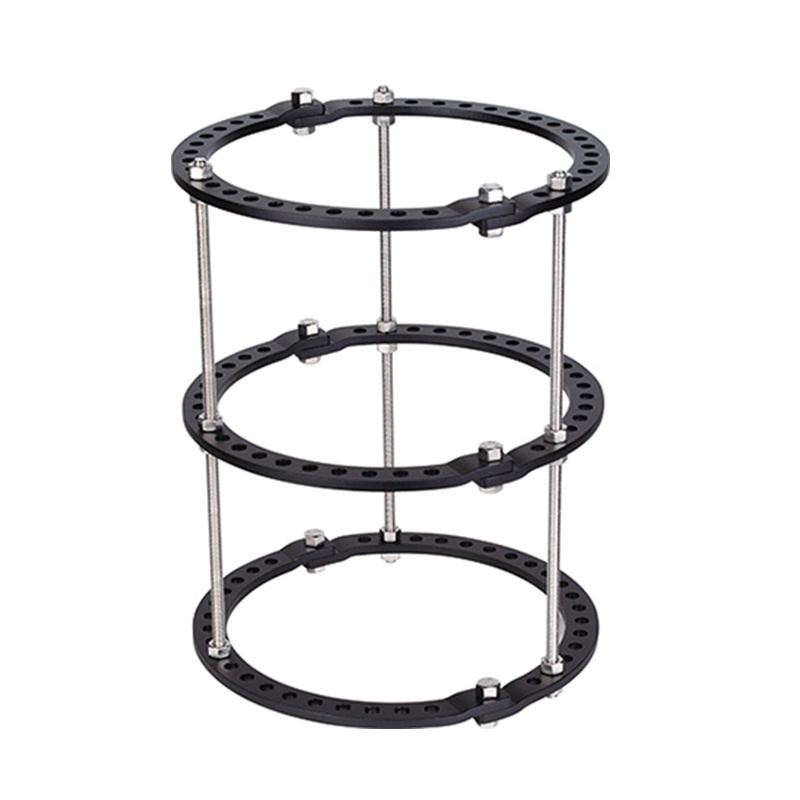Carbon fiber, derived from carbon atoms, is a revolutionary material. Gaining attention for its positive attributes carbon fiber products are slowly replacing traditional materials. The incredible weight-to-strength ratio is a game-changer, it is lightweight but with incredible high strength. While carbon fiber is used in various industries, it is particularly leading in orthopedics and medical equipment. Corrosion-resistant and durable, they are ideal in applications with high chances of wear and tear. With composite technology advancing, carbon fiber is gaining prominence in the field of orthopedics.
Some common uses of carbon fiber composites in orthopedics are:
- External Fixators: Carbon fiber rods, imitating bones and other orthopedic parts, are employed in external fixation devices to stabilize fractures externally. The patient feels minimum discomfort while facilitating bone healing.
- Prosthetics: Carbon fiber's lightweight and durable prosthetic limbs are slowly replacing traditional materials. The lightweight and high-strength characteristics and corrosion-resistant features offer amputees and differently-abled comfort and greater mobility.
- Bone Plates and Screws: Corrosion-resistant and durable carbon fiber-reinforced polymer plates and screws are used in orthopedic surgeries. The weight-to-strength ratio helps to stabilize fractures, correct deformities, and support damaged bones and joints during the healing process
- Implants: Carbon fiber composites' biocompatible nature makes them ideal for use in implants such as spinal cages and interbody fusion devices. They provide stability while reducing rejection risk and allowing better visualization during imaging procedures.
- Surgical Instruments: Lightweight and easily sterilized surgical instruments, such as carbon fiber retractors and forceps, provide precision and stability during surgical procedures. Orthopedic surgeries require specialized instruments for the best chances of healing.
Advantages of Traditional Materials
Carbon fiber is a relatively new material in orthopedics. Traditionally, metals like steel, aluminum, or wood were used. While they had their merits, they could not match in versatility and the incredible weight-to-strength ratio.
The main advantages of carbon in orthopedics include:
- Weight Reduction: It’s significantly lighter without compromising on strength.
- Increased Durability: The material resists wear and tear as it is corrosion-resistant, ensuring longevity.
- Flexibility in Design: Can be molded into various shapes and sizes, enabling more ergonomic and efficient designs.
Disadvantages Compared with Traditional Materials
When it comes to the use of carbon fiber in orthopedics, the advantages certainly outweigh the negatives.
The main disadvantages are:
Expensive: The cost of manufacturing carbon fiber products is fairly hefty. The composite material undergoes different manufacturing methods according to end-use.
Recycling Challenges: The composite material certainly has a few recycling challenges as the process is expensive and has an environmental impact if not done properly.
Manufacturing challenges are also a drawback, but an experienced carbon fiber manufacturer can tackle challenges and deliver a supreme quality that can be used without any hassle.
What are the Carbon Fiber Products used in Orthopedics?
Carbon Fiber Rods
Carbon fiber rods redefine orthopedic parts such as implants. They offer paralleled biocompatibility, as they have a similar elastic modulus to the bone. It also works for a variety of surgical applications, whether stabilizing the spine, correcting deformities, or supporting bone healing. The innovative solutions work for surgeons and improve patient outcomes and quality of life.
Carbon Fiber Sheets
Carbon fiber sheets are crucial in orthopedic applications, especially implants. The unique physical, chemical, and biological characteristics elevate surgical outcomes. Carbon fiber sheets reinforce orthopedic implants for enhanced strength and durability, reduced wear, and a high strength-to-weight ratio when combined with other materials.
Carbon Fiber Connecting Plates
Carbon fiber connecting plates offer radiolucency and minimal local tissue reaction supporting fracture fixation. The plates are customized for both adult and pediatric patients: short plates (minimum of two holes) and long plates (maximum of twenty holes). The composite plates are ideal in applications of fracture surgery; ensuring high healing rates and swift recovery. They excel in minimally invasive plate osteosynthesis for distal femur fractures.
Carbon Fiber Foot Rings
The high-tech composite is manufactured in the form of carbon fiber foot rings for orthopedic applications. Tailored for optimal support, stability, and secure attachment to the patient's limb, these long carbon foot rings redefine orthopedic care. Specifically designed for foot ring fixation, professionals trust these orthopedic parts for their precision, durability, and biomechanical compatibility.
Looking Ahead
As technology develops, there will be even more creative uses of carbon fiber products in medical equipment. The orthopedic world's adoption of carbon fiber is a testament to its unparalleled advantages. NitPro Composites is a reputed carbon fiber orthopedic parts manufacturer that delivers uncompromising quality products, including sheets, rods, tubes, and CNC profiles.


No comments yet